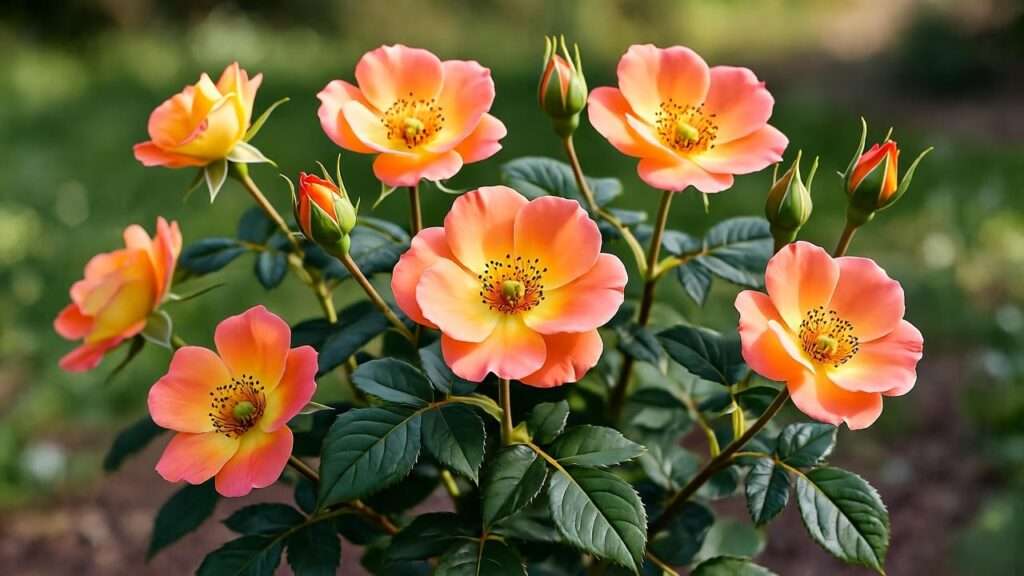Imagine a rose so luminous, it looks as though it captured the last rays of a tropical sunset and bottled them. That is the legendary ‘Tropicana’ Hybrid Tea rose for you. Since its debut in 1960, this spectacular cultivar, a celebrated All-America Rose Selection (AARS) winner, has set the standard for intensely colored, intensely fragrant roses. Its signature coral-orange blooms, borne on long, sturdy stems, are unmatched for cutting and garden display.
However, many gardeners struggle to coax the full, vibrant potential from their Hybrid Tea roses, often battling common fungal diseases or experiencing sporadic blooming that leaves the bush bare for weeks. This isn’t just a guide; it’s a masterclass in hybrid tea culture, providing the exact, science-backed steps required to ensure your Tropicana rose plant thrives, delivering continuous, disease-free flushes of color throughout the entire growing season. Our collective horticultural experience confirms that by mastering the environment and adopting precise cultural practices, you can dramatically elevate your rose-growing success. Let’s delve into the foundation of a magnificent, ever-blooming ‘Tropicana.’
II. Understanding the Tropicana Rose Plant: Foundation for Success (H2)
A successful rose garden begins long before the first pruning cut or fertilizer application. It starts with a deep understanding of the specific demands of your chosen cultivar. The Tropicana rose plant (Rosa ‘Tropicana’, also known by its breeder code, TANorstar) is a classic Hybrid Tea, meaning it produces large, elegant blooms typically one per stem, and requires slightly more attentive care than shrub or floribunda varieties.
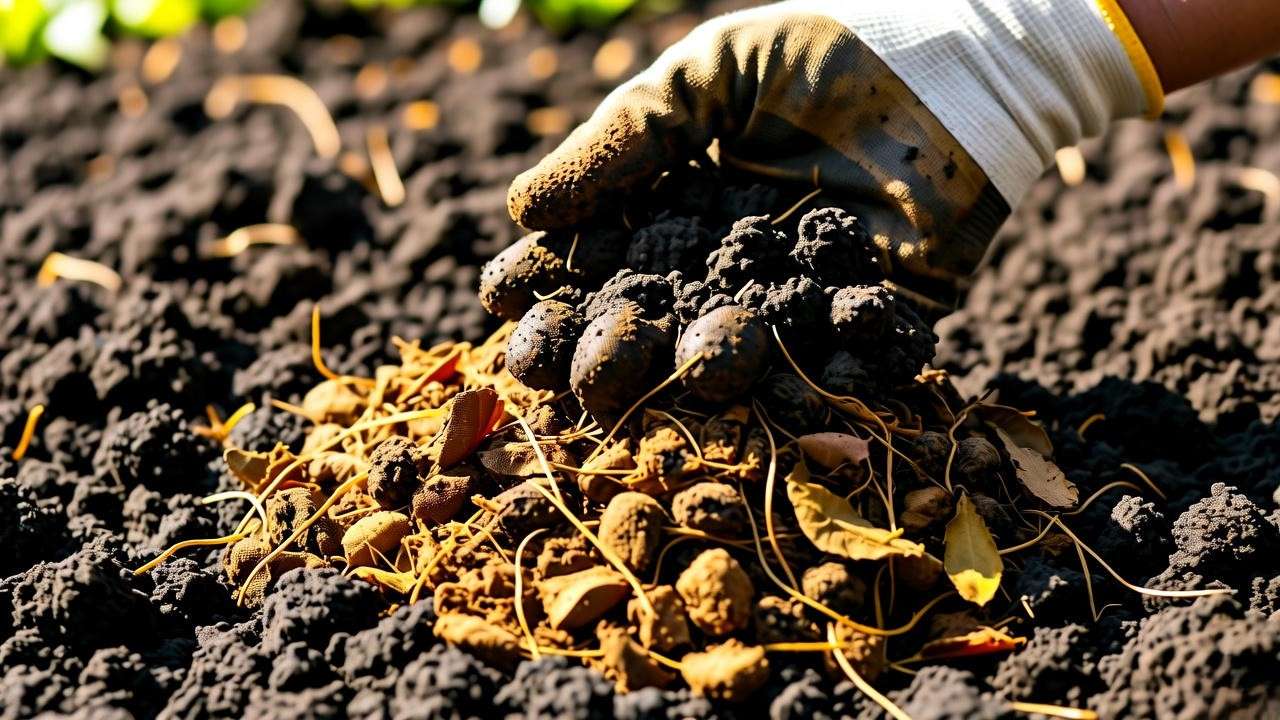
H3: Botanical Background and Key Characteristics
The ‘Tropicana’ earned its place in history not only for its mesmerizing color but also for its surprisingly good vigor and upright growth habit.
- Color and Fragrance: The blooms are a dynamic blend of deep coral, orange, and even pink tones, often deepening in cooler weather. They emit a strong, beautiful, fruity fragrance that is intoxicating and highly desirable.
- Mature Size and Habit: It develops into a bushy, upright shrub, typically reaching 4 to 6 feet in height with a spread of 2 to 4 feet, making it an excellent centerpiece for beds or a striking specimen plant.
- Bloom Cycle: Like all Hybrid Teas, ‘Tropicana’ is repeat-flowering, blooming profusely in flushes from late spring until the first hard frost. Maximizing these flushes is the central goal of this guide.
H3: Hardiness and Site Selection 🏡
The Tropicana rose is generally hardy across USDA Zones 5 through 10. However, site selection is arguably the single most important factor determining its health and bloom production.
| Requirement | Ideal Specification | Expert Rationale |
|---|---|---|
| Sun Exposure | Non-negotiable full sun (Minimum 6-8 hours direct light) | Sunlight is fuel for blooming. Less than 6 hours results in weak canes, sparse flowers, and increased susceptibility to mildew. |
| Air Circulation | Open area, away from tight walls or dense hedge corners. | Air movement dries dew and rain quickly off the foliage, which is the most effective cultural practice against Black Spot and Powdery Mildew. |
| Winter Alert (Zones 5-6): Gardeners in colder zones must plan for winter protection (see Section VII) to protect the vulnerable bud union from deep freezes. |
H3: Soil Preparation: The Nutrient Reservoir
Roses are heavy feeders and require soil that is both rich in organic matter and perfectly drained. If the roots sit in standing water (“wet feet”), they will rot, regardless of how healthy the top of the plant looks.
- Ideal Soil Structure: The best medium is a rich, fertile, well-drained loamy soil. It must be light enough to drain quickly yet heavy enough to retain moisture and nutrients.
- pH Requirements: Aim for a soil pH that is neutral to slightly acidic (pH 6.0–6.5). This range optimizes the plant’s ability to absorb essential micronutrients like iron, which contributes to the deep green and glossy foliage characteristic of a healthy ‘Tropicana.’
- Quick pH Fixes: Test your soil! If it’s too acidic (low pH), incorporate agricultural lime. If it’s too alkaline (high pH), add elemental sulfur or use acid-forming fertilizers.
- Expert Tip: The Importance of Organic Matter: Before planting, amend the entire bed (not just the planting hole) generously. Incorporate up to 50% aged compost and aged manure into the native soil. This improves drainage, boosts fertility, and introduces beneficial soil microbes, creating the ultimate root environment.
III. Planting the Tropicana Rose Plant for Optimal Growth (H2)
The planting stage is your one opportunity to get the foundation right. Take the time to execute this process flawlessly to set your Tropicana rose plant up for decades of vibrant performance.
H3: Bare-Root vs. Containerized Planting
The ‘Tropicana’ is commonly sold as a bare-root plant during late winter/early spring.
- Bare-Root Roses:
- Preparation: Soak the entire plant (roots and canes) in a bucket of water for 4–24 hours before planting. This rehydrates the roots and cane tissues.
- Pruning: Before planting, trim any damaged or broken roots. Cut the canes back to about 6-8 inches, removing weak or spindly growth.
- Containerized Roses:
- Preparation: Gently remove the plant from the pot. If the roots are tightly coiled (pot-bound), use your fingers or a knife to make four vertical cuts down the sides of the root ball to encourage outward growth into the native soil.
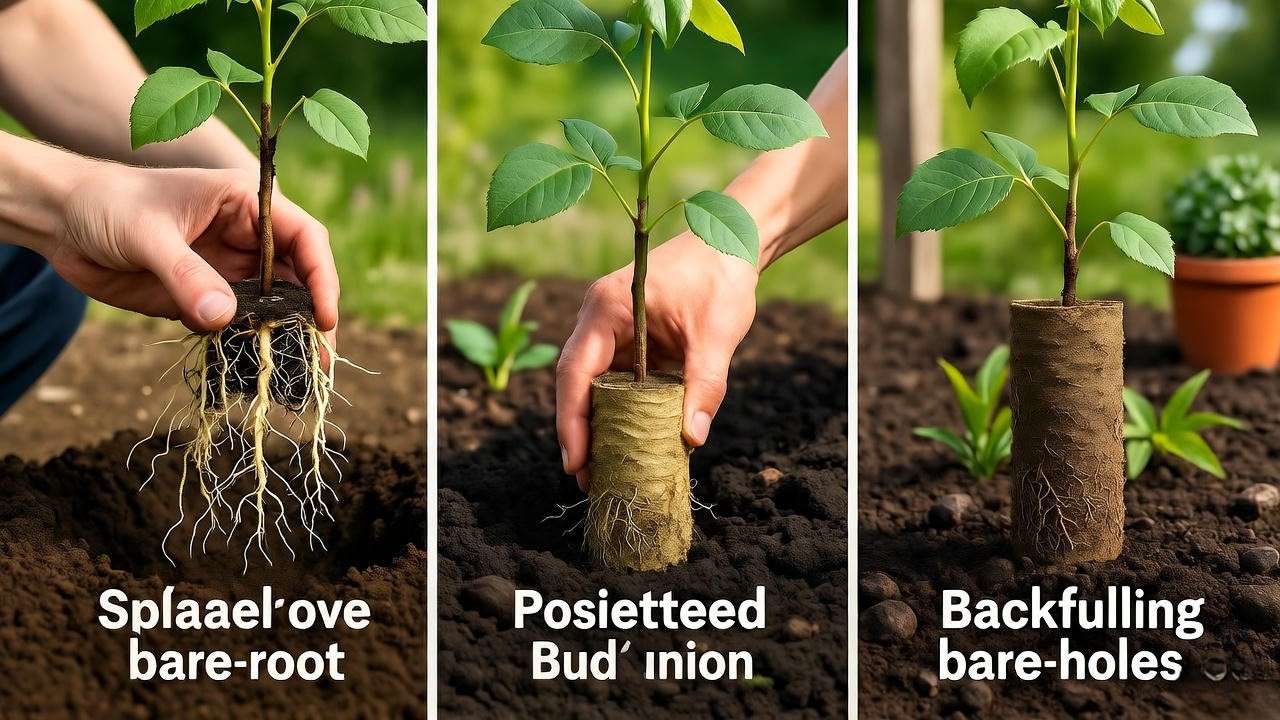
H3: Step-by-Step Planting Process (Illustrated) 🌱
- Dig Wide: Excavate a hole that is at least 15 inches deep and twice as wide as the root spread. This gives the roots plenty of loosened, amended soil to expand into.
- Mound the Soil: Create a small cone or mound of prepared soil (the mix of native soil and compost) at the bottom center of the hole.
- Position the Plant: Place the rose on top of the mound and spread the roots evenly down the sides.
- Critical Technique: Bud Union Placement: The bud union (the swollen knot where the canes join the rootstock) must be positioned correctly.
- Cold Climates (Zones 5-7): Position the bud union about 1–2 inches below the final soil grade for insulation.
- Warm Climates (Zones 8+): Position the bud union right at or just above the final soil grade.
- Backfilling and Firming: Gradually refill the hole with the amended soil, firming gently to eliminate air pockets. Do not tamp down heavily.
- Initial Watering: Water thoroughly until the soil is fully saturated. This settles the soil around the roots.
- Mulching: Apply a 2–3 inch layer of organic mulch (shredded bark, compost, or pine needles) around the base, keeping it a few inches away from the central canes to prevent fungal growth on the bark.
H3: Spacing and Companion Planting 🪴
Roses, especially Hybrid Teas, demand personal space.
- Recommended Spacing: Plant Tropicana rose plants 24 to 36 inches apart. Crowding roses is the single biggest invitation for black spot and powdery mildew because it blocks essential airflow.
- Best Companion Plants: Strategic companion planting can enhance aesthetics and provide natural pest control. Ideal companions include:
- Lavender and Rosemary: Aromatic herbs that deter common pests like aphids.
- Garlic and Chives: Known to repel spider mites and Japanese beetles.
- Catmint (Nepeta): Creates a cooling groundcover that keeps the soil shaded and slightly moist.
IV. The Core of Continuous Blooming: Watering and Feeding Strategies (H2)
To produce the size, color intensity, and quantity of blooms expected from a Tropicana rose plant, you must treat it like the high-performance specimen it is. This means consistent, targeted nutrition and hydration.
H3: Precision Watering Techniques 💧
Roses prefer moist roots but hate being waterlogged.
- Rule of Thumb: Water deeply and infrequently. Aim to saturate the top 12–15 inches of soil, then allow the top few inches to dry out before watering again. For established plants, this typically means one deep watering per week.
- Targeting the Root Zone: Never water the leaves. Use a soaker hose or drip irrigation system to deliver water directly to the soil surface. Watering overhead, especially in the evening, leaves moisture on the foliage, creating the perfect incubator for fungal diseases like Black Spot.
- Water Needs: Water needs peak during the two main bloom flushes (late spring and mid-summer) and during periods of extreme heat and drought. Reduce watering significantly in the fall as the plant prepares for dormancy.
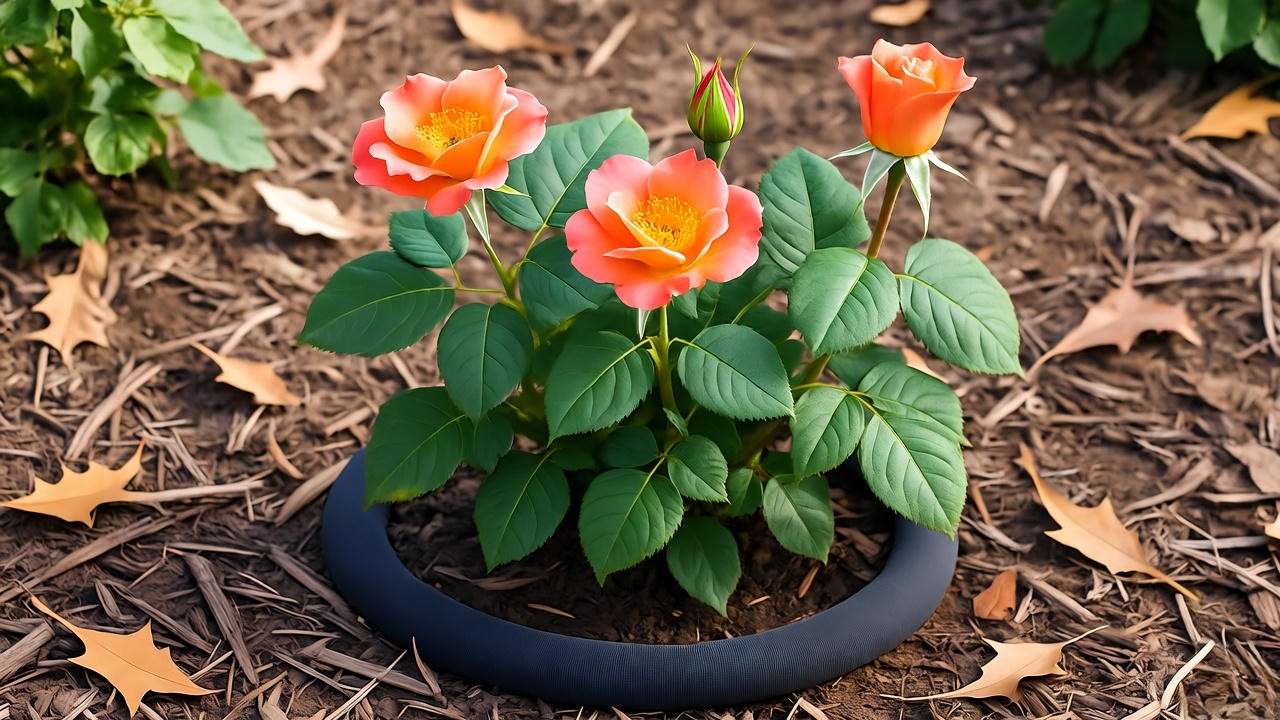
H3: The Ideal Fertilization Schedule 🍽️
The goal is to provide balanced nutrients that support both vigorous green growth (Nitrogen) and intense flowering (Phosphorus and Potassium).
| Timing | Goal | Recommended Fertilizer |
|---|---|---|
| Early Spring (After pruning/new growth) | Fuel initial growth, structure, and foliage. | High Nitrogen (e.g., Alfalfa meal or a balanced 10-10-10 or 12-12-12 slow-release rose food). |
| Mid-Summer (After first major flush, typically July) | Re-energize the plant for the next flush of blooms. | Balanced, Bloom-Focused (e.g., 5-5-7 or 10-20-10 liquid feed, or a bloom booster). |
| Late Summer (Mid-August) | Encourage final push of fall flowers. | Low Nitrogen (Potash or Bone Meal) to harden off canes for winter and avoid tender new growth. |
| Stop Fertilizing: No fertilization after late August. |
- Organic Alternatives: Supplementing with organic materials is a hallmark of expert care.
- Alfalfa Meal: Excellent source of trace minerals and a natural growth stimulant. Apply 1 cup around the base of each bush in spring.
- Fish Emulsion: Provides fast-acting nitrogen boost during the main growing season.
- Micronutrients for Vibrancy: To achieve truly glossy, dark-green foliage, ensure the plant can access micronutrients:
- Magnesium: Apply 1/4 cup of Epsom salts (Magnesium Sulfate) every 4–6 weeks during the growing season, dissolved in water or scratched into the soil. This helps intensify color saturation in both the foliage and the coral-orange blooms.
- Iron: If leaves show yellowing between the veins (chlorosis), apply a chelated iron supplement.
V. Pruning and Deadheading: The Art of Season-Long Bloom (H2)
Pruning a Tropicana rose plant is not just about maintenance; it is a critical gardening technique that controls the plant’s shape, maximizes air circulation, and dictates how many blooms you will get.
H3: Winter/Dormant Pruning (The Annual Reset) 🛠️
This is the most critical prune of the year, typically done in late winter or very early spring, just as the buds begin to swell but before new leaves emerge.
- The “Three Ds” Rule: First, cut out all Dead, Diseased, and Damaged wood. Cut these canes back to the healthy wood (the pith should be white, not brown).
- Remove Crossings: Remove any canes that are crossing or rubbing against each other. This promotes an open, vase-like shape that allows light and air into the center of the bush.
- Shaping: Cut the remaining strong, thick canes back by about one-third to one-half, making the cut at a 45-degree angle, approximately 1/4 inch above an outward-facing bud. This encourages new, strong growth directed away from the center.
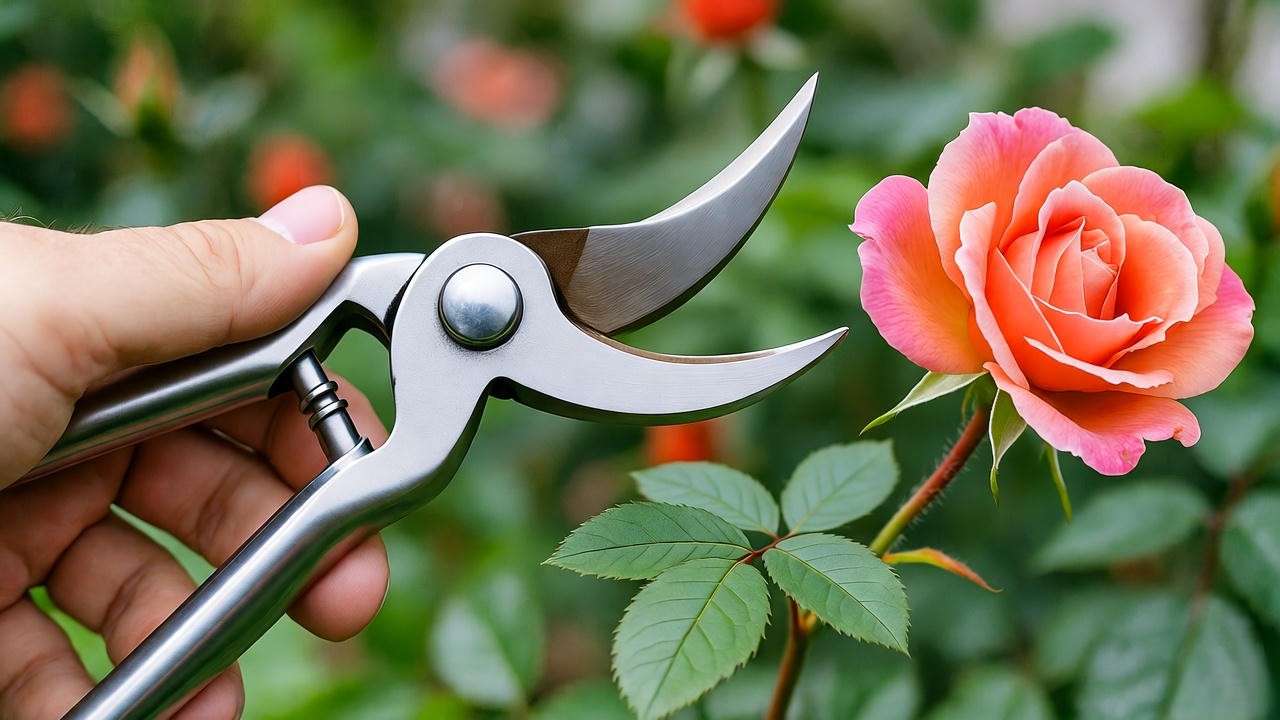
H3: Continuous Deadheading (Fueling the Next Flush) ✂️
The Tropicana rose is a repeat-bloomer; removing spent flowers is the signal to the plant that it needs to start producing the next batch of blooms.
- The Process: When a flower fades, follow the stem down until you reach the first set of five-leaflet leaves. Cut the spent bloom off just above this five-leaflet node, making the cut above an outward-facing bud.
- Why Five-Leaflets? The canes below five-leaflet leaves are typically mature enough to produce a new, strong stem and bloom. Cutting too high will often result in a weak, unproductive stem.
- Removing Faded Clusters: If the blooms are in clusters, remove the entire spent cluster back to the first strong, five-leaflet growth to maintain energy efficiency.
H3: Post-Bloom and Fall Pruning
As the season winds down, your pruning focus shifts from encouraging blooms to preparing the plant for survival.
- No Hard Pruning: Do not perform hard pruning in the fall. Hard pruning stimulates vulnerable, tender new growth that will be immediately damaged by frost, potentially leading to cane dieback and disease entry points.
- “Tidy-Up” Cut: Simply remove any lingering spent blooms and cut back excessively long canes that might whip in winter winds. Stop all deadheading and allow the last blooms to form rose hips (seed pods) which signals the plant to enter dormancy.
VI. Advanced Disease and Pest Management (H2)
The reputation of Hybrid Tea roses for being disease-prone is largely due to improper care. While ‘Tropicana’ has “Very Good Disease Resistance” (VDR), cultural practices must be perfect to maximize this trait. Our expert approach is based on prevention, which is vastly easier than treatment.
H3: The Big Three Fungal Threats (Prevention and Treatment) 🍄
Fungal diseases are spread by splashing water and thrive in high humidity and moisture.
| Disease | Identification | Prevention/Control Protocol |
|---|---|---|
| Black Spot (Diplocarpon rosae) | Circular, black spots with fringed, yellow halos on leaves, leading to rapid defoliation and plant weakening. | Prevention: Maintain excellent air circulation (pruning, spacing). Water only at the base. Treatment: Remove and destroy infected leaves immediately. Apply systemic or contact fungicides (e.g., chlorothalonil, Mancozeb) at the first sign of infection, following label directions strictly. |
| Powdery Mildew | White, powdery coating on young leaves, shoots, and buds; leaves become distorted or curled. | Prevention: Good air circulation and avoiding crowded planting. Control: Apply a solution of baking soda (1 tsp) and liquid soap (1 tsp) per gallon of water, or use a sulfur-based or bio-fungicide (e.g., Neem oil). |
| Rust (Phragmidium) | Orange, rust-colored pustules, usually on the undersides of leaves. | Prevention: Rigorous garden sanitation; spores overwinter in debris. Treatment: Copper-based fungicides can be effective. |
Expert Insight Box: Understanding Tropicana’s “Very Good Disease Resistance” (VDR) rating—it means it’s less susceptible, not immune. Cultural practices (airflow, no overhead watering) are always the first line of defense. Start a preventative fungicide spray program in spring if your garden history suggests a high risk.
H3: Common Pests and Integrated Pest Management (IPM) 🐞
The goal of IPM is to manage pests below damaging levels using the least toxic methods first.
- Aphids (The Suckers): Small, pear-shaped insects clustered on new growth and buds.
- Control: A strong jet of water (early in the day) or applications of insecticidal soap or Neem oil.
- Spider Mites (The Dry-Air Invaders): Tiny pests that thrive in hot, dry conditions, leaving fine webbing on the undersides of leaves.
- Control: Increase humidity by misting the foliage. Apply horticultural oil in the evening.
- Japanese Beetles (The Defoliators): Large, metallic green and bronze beetles that skeletonize leaves and chew flowers.
- Control: Physical removal is the most effective method. Knock them into a bucket of soapy water early in the morning when they are sluggish. Avoid beetle traps, as they can attract more beetles to your garden.
VII. Winterizing the Tropicana Rose Plant (H2)
For gardeners in zones 7 and below, winter protection is non-negotiable for the long-term health of your Tropicana rose plant. The primary goal is to insulate the vulnerable bud union.
H3: Preparing for Dormancy
Stopping fertilization (Section IV) by late summer is step one. This allows the plant to naturally transition into dormancy.
- Final Watering: Water deeply right before the first hard freeze. A well-hydrated plant handles cold better than a dry one.
- Foliage Removal: Strip off any remaining leaves. This removes overwintering fungal spores, drastically reducing the risk of disease next spring.
H3: The Winter Protection Protocol (Zones 5-6) 🧣
- Mounding: Once the ground freezes, gently mound 10–12 inches of high-quality, loose soil or compost around the base of the plant, completely covering the bud union and the lower canes. This mound is the primary defense against freezing and thawing cycles.
- Cane Protection: Wrap the canes with burlap or use styrofoam rose cones for additional protection, ensuring there are ventilation holes to prevent condensation and subsequent mold/mildew growth.
- Removing Protection: When spring arrives and daytime temperatures remain reliably above freezing (usually after the last frost date), gradually remove the protective materials and gently rake away the mounded soil. Do this gradually to avoid shocking the emerging buds.
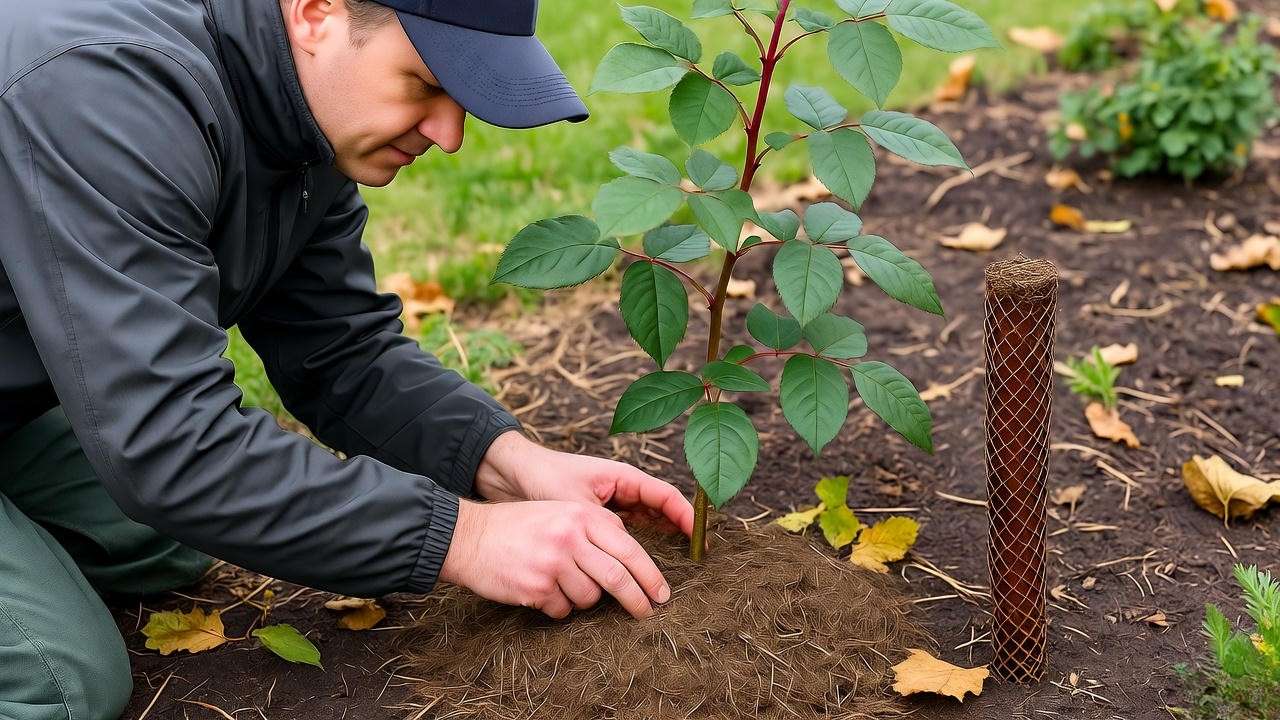
VIII. Troubleshooting Guide: Diagnosing Common Tropicana Rose Issues (H2)
Even the most meticulous gardener encounters occasional issues. Here is how to diagnose and correct the common problems that frustrate ‘Tropicana’ growers, ensuring your blooms stay vibrant and continuous.
H3: Why Aren’t My Flowers the Vibrant Coral Color? 🎨
If your blooms are pale orange or look “washed out,” the cause is usually environmental:
- Diagnosis 1: Too Much Shade. The coral pigments require intense sunlight to fully develop their saturated hues.
- Solution: If the location is permanent, ensure nearby trees or shrubs haven’t grown to block the light. If the rose is portable (in a container), move it immediately to a site with 6+ hours of full sun.
- Diagnosis 2: Nutrient Imbalance. Potassium (K) is vital for flower color and vigor.
- Solution: Boost your feeding routine with a high-potash fertilizer (the third number in the N-P-K ratio). Consider adding a top-dressing of wood ash or kelp meal.
H3: Lack of Repeat Blooms: What Went Wrong?
If your rose had a strong spring flush but then went dormant for weeks, the common culprits are usually stress or operator error.
- Diagnosis 1: Insufficient Deadheading. The plant is spending energy trying to mature the seed pods (rose hips) instead of making new flowers.
- Solution: Review Section V.H3 and ensure you are cutting back to the correct five-leaflet leaf above an outward-facing bud.
- Diagnosis 2: Drought or Heat Stress. Extended periods of dryness or temperatures consistently above 95°F can cause the plant to shut down flower production to conserve energy.
- Solution: Ensure consistent, deep watering during peak summer heat (check soil moisture before watering).
- Diagnosis 3: Pest or Disease Stress. If the plant has lost 50% or more of its leaves to black spot, it cannot photosynthesize enough energy to produce flowers.
- Solution: Prioritize aggressive disease management (Section VI) to rebuild the foliage health.
H3: Cane Dieback and Canker 💀
This presents as brown, black, or purplish sunken areas on the canes, often leading to the death of the cane from the top down.
- Diagnosis: Often related to improper pruning cuts that expose the pith (wood) to pathogens, or extreme winter injury.
- Solution: Always use sterilized pruners. When you see dieback, immediately prune the cane back to healthy, white pith, making the cut just above an outward-facing bud. Apply a sealant to major cuts if needed, though many experts simply rely on a clean cut. Maintain overall plant health (feeding/watering) so the rose can fight off infections naturally.
IX. Conclusion: Your Year-Round Tropicana Success Plan (H2)
The Tropicana rose plant is an absolute masterpiece of hybridizing—a bold, fragrant classic that rewards diligence with spectacular, show-stopping blooms. Achieving that “vibrant, disease-free” status requires a commitment to a few, precise routines, but the reward is a garden centerpiece that performs tirelessly from spring to frost.
To summarize the high-impact, expert practices that will ensure your success:
- Rigorous Sanitation & Airflow: Never water overhead, and prune annually to maintain an open, vase-like shape. This is your primary defense against fungal diseases.
- Consistent Hydration & Targeted Nutrition: Use a three-stage fertilization schedule and prioritize deep, infrequent watering to support the high energy demands of continuous blooming.
- Precision Deadheading: Cut back spent blooms to a five-leaflet leaf to force the plant to divert energy immediately into the next flush.
By integrating these strategies, you will not only be growing a rose; you’ll be cultivating a legacy of gardening success. Transform your ‘Tropicana’ from an occasional bloomer into a vibrant, year-round performer.
FAQ Section (Schema Optimization Opportunity) 💡
- Q: Is the Tropicana Rose fragrant?
- A: Yes, the ‘Tropicana’ is highly prized for its strong, sweet, and distinctly fruity fragrance. It is one of the most fragrant Hybrid Tea roses available.
- Q: Does Tropicana need afternoon shade?
- A: No. Unlike some paler roses that can “fry” in extreme heat, the Tropicana rose plant thrives in full sun (6-8+ hours). Providing afternoon shade can reduce both the intensity of the coral color and the number of blooms.
-
Q: What is the best fungicide for Tropicana rose black spot?
-
A: Integrated Pest Management (IPM) suggests cultural control first. If a fungicide is needed, look for contact fungicides like Chlorothalonil or systemic products containing Propiconazole or Myclobutanil. Rotate fungicides to prevent the fungus from developing resistance.
-

